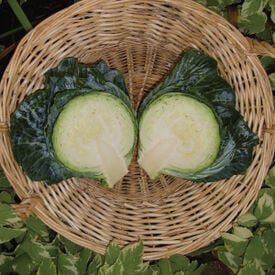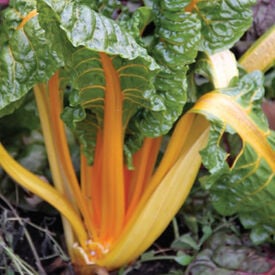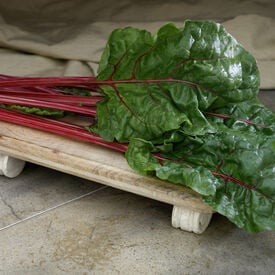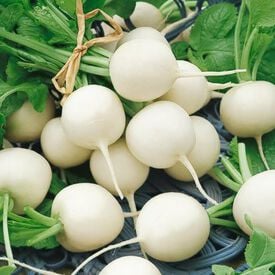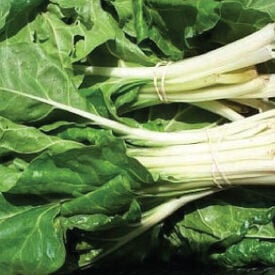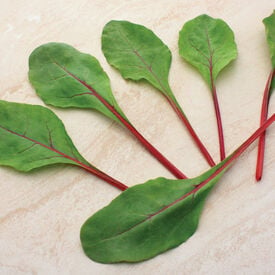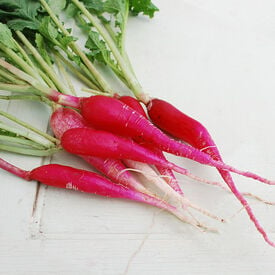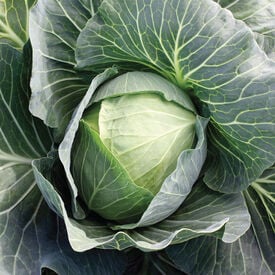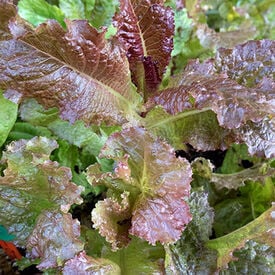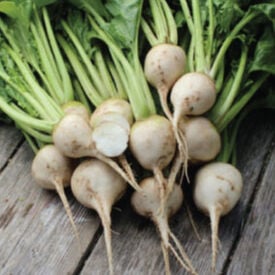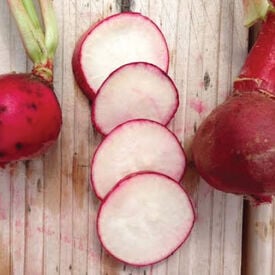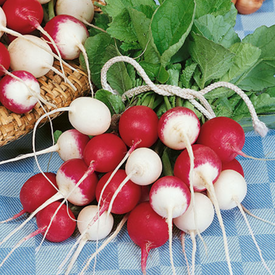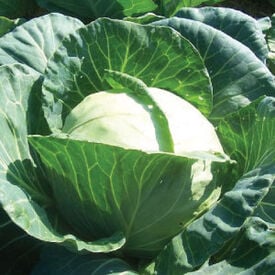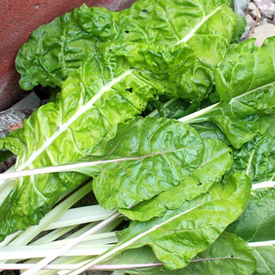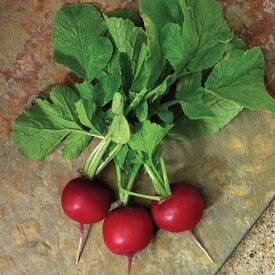Red Arrow radish seeds produce fast-growing plants that are primarily cultivated for their vibrant red stems and lush green leaves rather than their roots. This variety is especially prized for microgreens and edible shoots, offering a crisp texture and a bold, spicy radish flavor that adds zest to salads, sandwiches, and garnishes. Red Arrow is easy to grow, thrives in full sun to partial shade, and is well-suited for both garden beds and indoor trays. Its striking color and strong flavor make it a favorite among chefs and home growers alike.
First released in 1909 by H. Hartmann & Company, this historic Danish cabbage has earned its reputation as a dependable garden classic and a benchmark for many modern varieties. It forms dense, well-wrapped heads measuring about 6–8" across and weighing 3–4 pounds, making it an excellent choice for smaller gardens. Plants mature quickly, adapt well to a wide range of growing conditions, and show strong resistance to splitting. Once harvested, the firm heads store exceptionally well—often lasting up to six months—adding to the long-standing appeal of this time-tested heirloom.
This heirloom Rainbow Swiss chard is remarkably easy to grow and delivers a steady harvest of nutritious greens from a single sowing all season long. Plants feature an upright growth habit that keeps leaves clean and makes harvesting simple, whether picked young or at full size. The vibrant blend of stems ranges from red, pink, white, yellow, and gold, paired with leaves that shift from bright lime green to deep purple-green as they mature. While baby leaves tend to show softer tones—mostly pinks, reds, and whites—the colors intensify as plants reach full size, creating a striking and colorful display that’s as eye-catching in the garden as it is at market.
The Orange Fantasia is a brightly colored orange Swiss Chard. This is a tasty variety that is great for people who want to grow controlled colors of different Swiss Chard. The Orange Fantasia's orange color comes when mature and ready for harvest.
Fire Fresh hybrid swiss chard is excellent for baby leaf or spring mix production. Produces bright red petioles and medium-dark green leaves. Has an above normal growth rate and produces long oval leaves that have a slight texture.
Dating back to the 1800s, Hailstone is a classic heirloom radish prized for its exceptionally fast maturity. This variety produces small, round, snow-white roots that resemble tiny hailstones, with compact tops and slender taproots that make it ideal for close spacing. The crisp 1–1½ inch globes offer a bright, tangy flavor with a pleasant pungency, and the firm white flesh stays fresh and appealing longer than many other radishes. Hailstone performs best when planted very early in spring in a sunny, well-prepared bed enriched with organic matter. For a steady supply, sow seeds every two weeks and harvest before hot summer weather, which can affect flavor and texture.
The Large White Ribbed Swiss Chard has a wide and flattened white stem. This variety is a popular heirloom chard that has tender and thick smooth leaves. The Large White Ribbed is very tasty and can even substitute asparagus when creamed.
Ruby Fresh hybrid swiss chard is perfect for market growers. Perfect for producing baby leaf greens that have bright red petioles with a well-defined venation. It has thick round to oval leaves. Ruby Fresh is a great choice for baby leaf or spring mix growers.
The Cincinnati Market Radish is a uniquely skinny and elongated pink to red radish that is a fresh-from-the-garden-favorite! This six inch variety has a delicately mild taste with a very tender and crisp texture, making it perfect for fresh eating. The early maturing radish has been an heirloom garden favorite since 1885. You can enjoy the delicious Cincinnati Market from spring to fall.
SuperStar is a hybrid cabbage that produces the highest quality fresh market cabbages. It has excellent wrappers for a fancy pack along with excellent holding ability in the field and after harvest.
The Red Velvet Lettuce produces very dark maroon to greenish-bronze tinged colored leaves that have a nice chewy texture. This beautifully unique variety is a great choice for mixed salad greens. This lettuce is slow to bolt and will become bitter in the heat.
The White Albino beet plants produce good yields of very sweet white beets. The beets are white and will never stain again! This gourmet beet is ideal for boiling, pickling, baking, and freezing.
The Champion Radish is slow to become pithy. This radish is an excellent cooler weather variety, especially for short season climates. This bright red, crisp, round radish has large tops and is a good choice for early or late plantings. This highly recommended radish is great for eating fresh, in salads or for garnishes.
The Confetti Mix is a fast maturing, colorful bled of the classic red, white, and bi colored radishes, all with a remarkable flavor! This fun mix is a beautiful addition to any assortment. These classic bright colors are perfect for any market grower or home gardener.
This cabbage is known for its solid head and excellent flavor. Early Flat Dutch is a big cabbage, it is a good keeper and the standard early season variety. Heads form up to 12 inches and weigh as much as 15 pounds. Early Flat Dutch has an excellent flavor.
The Lucullus Swiss Chard produces highly nutritious leaves from early spring until the first hard freeze in the fall. This variety produces great during the summer heat. This chard is a very popular variety grown throughout the United States.
Crunchy Royale is a dark red, round radish ideal for bunching or cello pack. It yields high quality and extremely uniform roots. Overall, Crunchy Royale offers excellent internal and external color and a high pack-out rate for growers.
Spring Raab broccoli, also known as rapini, has roots in Mediterranean cuisine, particularly in Italy, where it has been cultivated for centuries. This unique vegetable is characterized by its slender, green stalks topped with small yellow flowers and dark green leaves, which are edible and packed with nutrients. The flavor of Spring Raab is distinctively bitter and nutty, which softens with cooking, making it a versatile addition to dishes like stir-fries and pasta. Harvesting typically occurs 40-60 days after planting, ideally before the flowers fully open for optimal taste. This cool-season crop thrives in well-drained soil and prefers cooler temperatures, making it perfect for early spring or fall planting. Its rapid growth and ability to produce multiple harvests make Spring Raab a favorite among gardeners, while its rich vitamin content adds to its appeal for health-conscious cooks.

